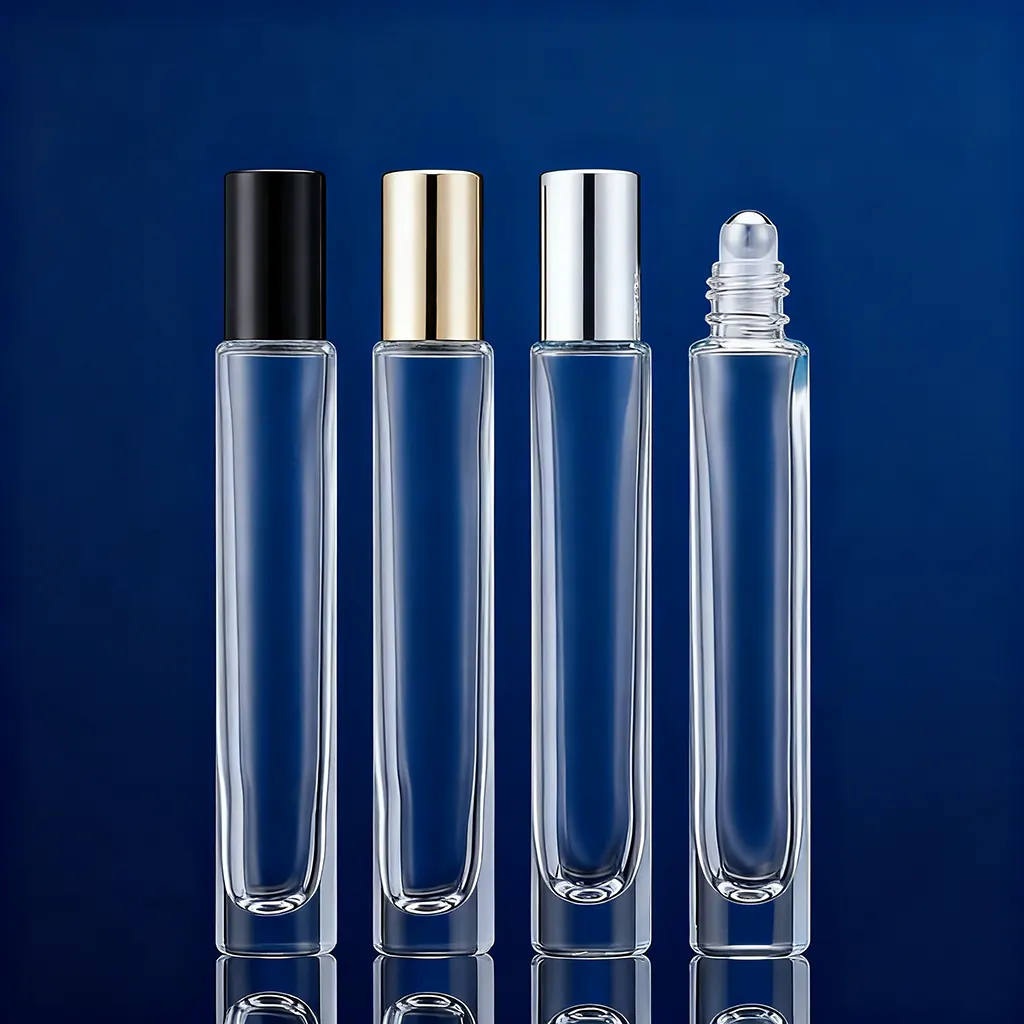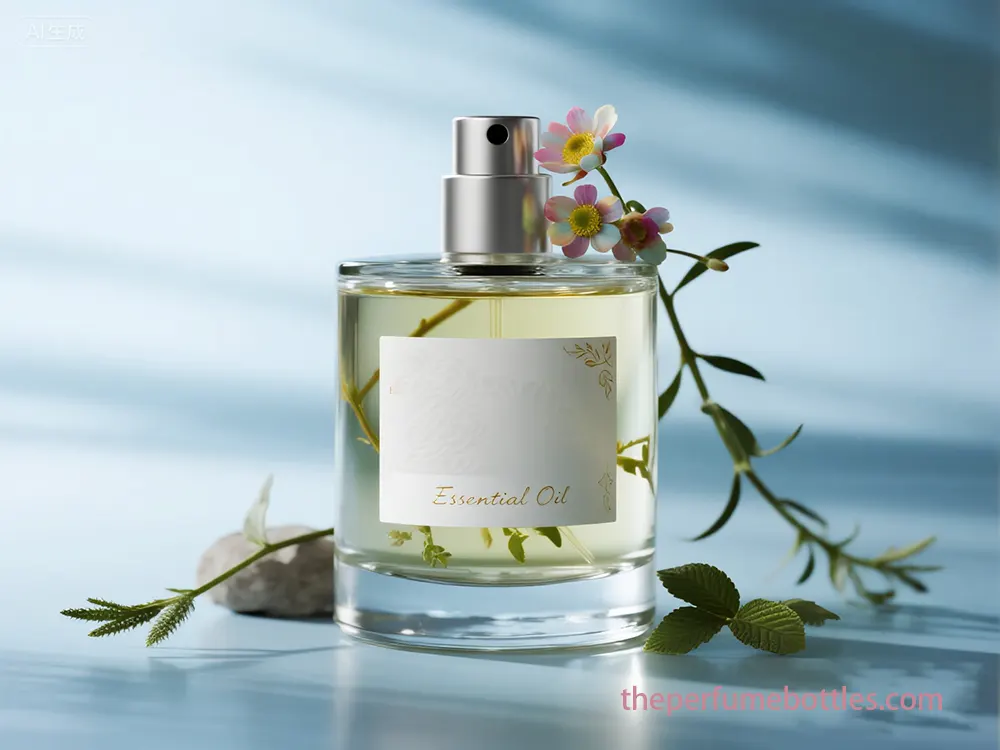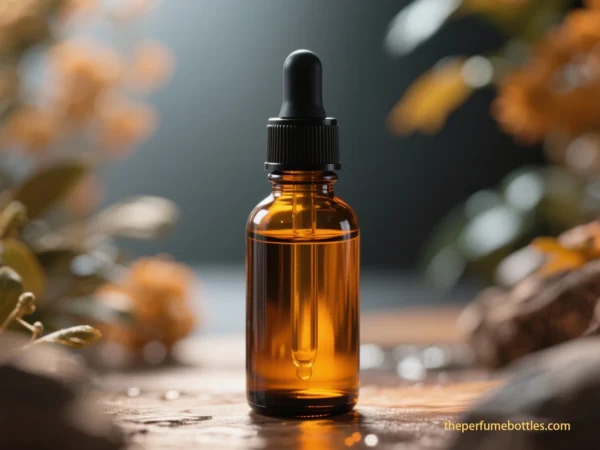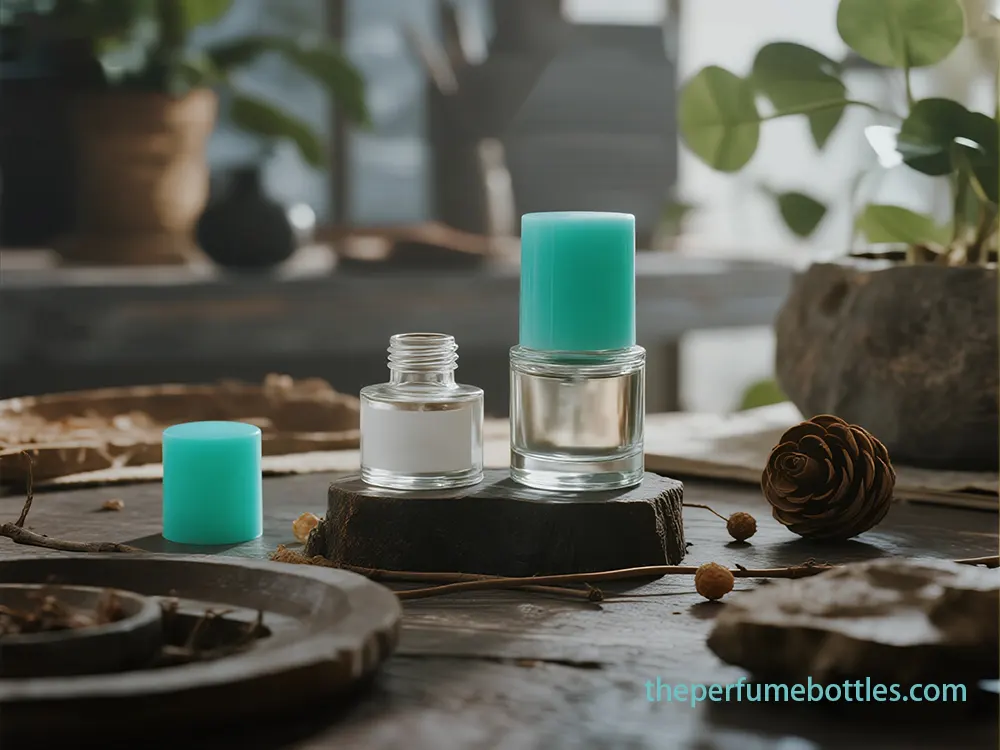
Online Marketplaces
สารบัญ
บทนำ
2.2 Initial screening criteria: Stated Capabilities : Align supplier focus areas with your requirements.

High-quality glass (e.g., high borosilicate), premium plastics, and metal components are crucial. Hand-polished glass, though increasing costs by up to 40%, significantly elevates perceived quality.
Financial Stability
: Conduct preliminary checks using resources like Dun & Bradstreet or financial documents. Assess reliability using Operational Risk Management Science (ORMS).
Scalability
- : Assess capacity to meet projected volume growth.Minimum Order Quantities (MOQs)
- : Confirm compatibility with your plans.Sustainability Claims
- : Conduct initial checks and look for certifications.Regulatory Compliance
- : Verify understanding and adherence to regulations in target markets (EU, US FDA).Supply Chain Risk
- : Assess their supply chain structure and potential risks.Consider backup suppliers. AI tools can automate identification and initial vetting.
- 3. Examining Supplier Capabilities, Quality, and ComplianceConduct comprehensive analysis of shortlisted vendors, focusing on manufacturing, quality control, regulatory adherence, sustainability, and functional integrity.
3.1 Manufacturing Capacity and Technology.

High-quality glass (e.g., high borosilicate), premium plastics, and metal components are crucial. Hand-polished glass, though increasing costs by up to 40%, significantly elevates perceived quality.
3.2 Quality Control Processes.
Evaluate the provider’s top quality management system and certifications (ISO 9001). Assess:
Adherence to Specifications
- : How they ensure packaging meets detailed specs.Consistency and Reliability
- : Processes for batch-to-batch consistency.Inspection
- : Procedures during manufacturing and before shipment.Complaint Resolution
- : Handling complaints, returns, and corrective actions.: สำรวจทางเลือก แต่ตรวจสอบอย่างละเอียดและเข้าใจ MOQs
- RFx Processes (RFI, RFP, RFQ): ใช้กระบวนการทางการเมืองเพื่อสะสมข้อมูลรายละเอียด ความสามารถ และราคา
2.2 ข้อตั้งชื่อเกณฑ์การคัดตัวเริ่มแรก:
- ความสามารถที่ระบุ: ปรับให้สอดคล้องกับข้อเรียกร้องของคุณ
- การรับรอง: ตรวจสอบการลงทะเบียนธุรกิจสำคัญและคำรับรองของอุตสาหกรรม (ISO 9001, GMP, ISO 15378)
- ความมั่นคงทางการเงิน: ดำเนินการตรวจสอบเบื้องต้นด้วยแหล่งที่อาจใช้ เช่น Dun & Bradstreet หรือเอกสารทางการเงิน ประเมินความน่าเชื่อถือด้วย Operational Risk Management Science (ORMS)
- ความสามารถในการขยายตัว: ประเมินความสามารถในการตอบสนองต่อความเติบโตของปริมาณที่ dự kiến
- ปริมาณสัตยามิติ (MOQs): ยืนยันความเข้ากันกับแผนของคุณ
- การยืนยันความยั่งยืน: ดำเนินการตรวจสอบเบื้องต้นและมองหาคำรับรอง
- การ tuân thủกฎหมาย: ตรวจสอบความเข้าใจและการปฏิบัติตามกฎหมายในตลาดเป้าหมาย (EU, US FDA)
- ความเสี่ยงในหลักสร้าง: ประเมินโครงสร้างหลักสร้างและความเสี่ยงที่อาจเกิดขึ้น
อธิบายผู้จัดหาสินค้าเป็นแทนที่ โปรดใช้ AI tools เพื่ออัปลัยซึ่งการระบุและการตรวจสอบเริ่มแรก
3. การตรวจสอบความสามารถ คุณภาพ และ tuân thủของผู้จัดหาสินค้า
ดำเนินการการวิเคราะห์ทั้งหมดของผู้จัดหาสินค้าที่ถูกคัดเลือก โดยให้ความสำคัญกับการผลิต การควบคุมคุณภาพ การ tuân thủกฎหมาย การยืนยันความยั่งยืน และความสมบูรณ์ของฟังก์ชัน
3.1 ความสามารถในการผลิตและเทคโนโลยี
ตรวจสอบความสามารถในการผลิตสำหรับปริมาณปัจจุบันและที่ dự kiến อาจวิเคราะห์ความคิดสร้างและเครื่องมือเพื่อประสิทธิภาพและความก้าวหน้า การเข้าสถานที่มีความแนะนำสูงเพื่อสังเกตการณ์การดำเนินงานและพบกับคนงาน ตรวจสอบประวัติทางเทคนิคและความสามารถในการพัฒนา
3.2 กระบวนการควบคุมคุณภาพ
ประเมินระบบการจัดการคุณภาพระดับสูงและคำรับรองของผู้ให้บริการ (ISO 9001) ประเมิน:
- การ tuân thủข้อกำหนด: ว่าพวกเขาจะทำไมตามข้อกำหนดรายละเอียด
- ความสม่ำเสมอและความน่าเชื่อถือ: กระบวนการสำหรับความสม่ำเสมอระหว่างชุดตัวเลข
- ตรวจสอบ: กระบวนการในระหว่างการผลิตและก่อนส่งสินค้า
- การแก้ไขความไม่พอใจ: การจัดการคำร้องเรียน การคืนสินค้า และการดำเนินการปรับปรุง
- ตรวจสอบคุณภาพ: การใช้รายการตรวจสอบที่ละเอียด
- ยืนยันตัวอย่าง: กระบวนการสำหรับตัวอย่างก่อนผลิตและการตรวจสอบการผลิต
- การตรวจสอบชุด: การตรวจสอบที่เกิดขึ้นเพื่อรักษาคุณภาพ
3.3 การตกลงตามกฎหมายและมาตรฐานของอุตสาหกรรมผลิตภัณฑ์ครีม
ประเมินความรู้ในกฎหมายและกระบวนการการทำตาม ซึ่งแตกต่างกันตามภูมิภาค (สหภาพยุโรป สหรัฐ)
- การทำตามของสหภาพยุโรป: ความเข้าใจกฎหมายหมายเลข 1223/2009 (การแสดงบนฉลาก ส่วนผสม กลิ่น ส่วนผสมขนาดนิวเคลียร์) การประเมินทางไวรัสภายใน การรู้จัก PIF/CPNP การทำตาม GMP
- การทำตามของสหรัฐ: ความเข้าใจกฎหมาย FD&C และกำหนดการของ FDA (การแสดงบนฉลาก วัสดุ ความปลอดภัย) คู่มือการแสดงบนฉลากของผลิตภัณฑ์ครีม การรู้จักกฎหมาย Safe Cosmetics Act การรู้จัก VCRP คำเตือนที่เป็นข้อบังคับ
- การทำตามทั่วไป: การทำตาม ISO 22715 ประสบการณ์กับกฎหมายที่กำลังพัฒนา การประเมินความปลอดภัยของการบรรจุ การตรวจสอบการใช้วัสดุที่ถูกบำบัด การวิเคราะห์สารที่ถูกจำกัด (BPA และ PFAS) การทำตามกฎหมายวัสดุที่ถูกบำบัด (EU 2022/1616) การเข้าใจ PPWR การจัดหาวัสดุที่มีความยุติธรรม การซื้อประกันความต้องหาสินใจ
ปรึกษาผู้เชี่ยวชาญด้านกฎหมายเพื่อให้ความปลอดภัยต่อการแสดงบนฉลากและรักษาความรู้
3.4 การยืนยันคำเตือนและการรับรองในด้านความยั่งยืน
ยืนยันคำเตือนด้านความยั่งยืนเกินกฎหมาย
- การรับรองจากฝ่ายที่สาม: ใช้การรับรอง (APR และ FSC และ BPI และ ISO 14001 และ Cradle to Cradle) เป็นจุดเริ่มต้นสำหรับคุณสมบัติเฉพาะ
- การประเมินชีวิต (LCAs): ถามเกี่ยวกับการบริจาคข้อมูลสำหรับ LCAs
- การตรวจสอบวัสดุ: ตรวจสอบส่วนผสมที่ถูกบำบัด รับรองคำเตือนด้านธรรมชาตร์ ประเมินการตรวจสอบวัสดุที่ถูกบำบัด (ความสามารถ คุณสมบัติ ความปลอดภัย และ NIAS) ประเมินการตรวจสอบการถ่ายโอน ยืนยันการวิเคราะห์สารที่ถูกจำกัด
- การตรวจสอบกระบวนการ: ประเมินความทันทีของพลังงาน การลดการกำจัดของเสีย การใช้น้ำ และการจัดหาวัสดุที่มีความยุติธรรม
- การออกแบบสำหรับความยั่งยืน: ประเมินการสนับสนุนสำหรับการออกแบบเพื่อการซ่อมแซม และวัสดุเดียวกัน
- แนวทางโดยรวม: ค้นหาผู้จัดหาวัสดุที่มีการสำรวจวัสดุเข้ากันได้ การปรับปรุง และการสนับสนุนการเติมเต็ม/ใช้ lại
- ความชัดเจน: ประเมินความต้องการในการเปิดเผยเกี่ยวกับการจัดหาวัสดุและการผลิต
- มาตรฐานสำหรับการใช้งานวัสดุอย่างมีความยั่งยืน: ติดตามร้อยละของวัสดุที่จัดหามาอย่างมีความยั่งยืน
3.5 ความน่าเชื่อถือของการดำเนินงานโดยรวม
ประเมินประวัติการจัดส่งตามกำหนดเวลา การ xử lýคำสั่งซื้อฉุกเฉิน และการตอบสนอง ประเมินแผนฉงายและทรัพยากรสำรอง ข้อมูลจากลูกค้าที่มีอยู่เป็นประโยชน์สำหรับการประเมินความน่าเชื่อถือและสุขภาพทางการเงิน

High-quality glass (e.g., high borosilicate), premium plastics, and metal components are crucial. Hand-polished glass, though increasing costs by up to 40%, significantly elevates perceived quality.
4. การประเมินโครงสร้างต้นทุนและความน่าเชื่อถือทางการเงิน
ประเมินโครงสร้างต้นทุนและความน่าเชื่อถือทางการเงินอย่างลึกซึ้ง ราคาของหน่วยไม่เสมอคือต้นทุนรวมที่ต่ำที่สุดหรือหลักสายจัดหาที่ปลอดภัยที่สุด
4.1 การประเมินโครงสร้างต้นทุนและความน่าเชื่อถือทางการเงิน
รับรู้โมเดลราคาและขอการแยกออกให้ชัดเจน คำนึงถึง:
- การแข่งขัน: ประเมินราคาเปรียบเทียบกับผู้อื่นและมาตรฐานของอุตสาหกรรม
- ความชัดเจน: การแยกออกของต้นทุนชัดเจน (วัสดุ การผลิต อุปกรณ์)
- นัดชำระเงิน: ประเมินและตกลงเงื่อนไข
- การส่งสินค้าลดราคาตามปริมาณ: รับรู้ราคาแบบชั้น
- ต้นทุนในการเป็นเจ้าของโดยรวม (TCO): คำนวณ TCO รวมการสมัคร (วัสดุ อุปกรณ์) และต้นทุนการดำเนินงาน (งาน พลังงาน) รวม "ต้นทุนที่ไม่ชัดเจน" (คลังสินค้า สินค้าส่งผิดประเภท/กำลังถูกยกเลิก) การเข้าร่วมของผู้ผลิตในตอนแรกสามารถปรับปรุง TCO
- ปัจจัยต้นทุนการผลิต: รับรู้ว่าระดับความซับซ้อน ปริมาณ กระบวนการ และปริมาณที่มีผลต่อต้นทุน
- ความต่ำกว่าร้อยละ: คำนึงถึงเป้าหมายร้อยละของคุณเมื่อประเมินต้นทุนผู้จัดหา
กำหนดราคาและนโยบายร้อยละให้เป็นไปได้ การประเมินราคาเป็นการสนับสนุนการตกลง
4.2 การประเมินความน่าเชื่อถือทางการเงิน
ตรวจสอบสุขภาพทางการเงินและการแข่งขันเพื่อลดความเสี่ยงของการขัดข้อง
- การตรวจสอบเอกสารการเงิน: ในการวิเคราะห์รายงานประจำปี แถวการทำธุรกิจ และการแจ้งสถานการณ์เงินสด
- ดัชนีทางการเงินสำคัญ: ตรวจสอบเงินสด ทรัพยากร หนี้ หน้าที่ ทรัพยากรรวม (บัญชีเทอม) รายได้ ผลกำไร มีอัตราส่วน (บัญชีผลกำไร) ทุนจากการดำเนินงาน/การลงทุนซื้อสินค้า (การแจ้งสถานการณ์เงินสด)
- อัตราส่วนทางการเงิน: คำนวณหนี้ต่อทุนและประเมินผลกระทบ/ความเสี่ยง
- ความเสริม: ประเมินความสามารถในการตอบสนองพันธกรรมระยะสั้น
- การวิเคราะห์แนวโน้ม: ตรวจสอบผลการทำงานในระยะเวลาเพื่อเชื่อมโยงสถานการณ์ที่แย่ลง
- แหล่งข้อมูล: ใช้ผู้จัดอันดับเชื้อเชิญ (Dun & Bradstreet) และการอ้างอิงลูกค้า
- สัญญาณเตือนและการลดความเสี่ยง: แก้ไขสัญญาณการไม่มั่นคง ขอข้อมูลเพิ่ม ให้เข้าใจวิธีการลดความเสี่ยง พัฒนาแผนการฉุกเฉิน (ผู้จัดหาผู้ให้บริการแบบเปลี่ยนไป) รวมผลสัมฤทธิ์ทางการเงิน/ข้อกำหนดออกในสัญญาเชิญ เพิ่มการตรวจสอบเนื่องจากคำกังขาในสัญญาเชิญ รับญาณความตึงเครียดที่อาจเกิดขึ้นและตรวจสอบสัญญาเชิญเป็นระยะ
- การประเมินความมั่นคงทางการเงิน: จัดให้มีระบบการประเมินภายใน (มั่นคง ตามมาตรฐาน ต้องตรวจสอบ) เพื่อจัดหมวดหมู่ผู้จัดหาผู้ให้บริการและตัดสินใจอัตราการตรวจสอบ (อย่างน้อยทุกปี)
การเข้าใจเศรษฐกิจผู้จัดหา (การขนส่ง ขนาดการสั่งซื้อ) เป็นส่วนหนึ่งของการประเมินผลกระทบทางการเงิน
5. การประเมินการเสนอบริการและความเป็นไปได้ของการร่วมทำงาน
ประเมินระดับการให้บริการและความเป็นไปได้ในการเป็นผู้ร่วมทำงานระยะยาวสำหรับการคิดค้น ประสิทธิภาพ และความทนทานของหลักสายจัดส่ง
5.1 การประเมินการเสนอบริการ
ประเมินบริการเพิ่มเติม:
- สิ่งเหล่านี้ทำให้ภาชนะพื้นฐานกลายเป็นศิลปะ ซึ่งเพิ่มผลกระทบทางตาและการประสบความตามสายตา ประเมินความสามารถในการออกแบบอุตสาหกรรม การสร้างแบบแบบ (การพิมพ์ 3D) การออกแบบกราฟฟิก วิศวกรรม การสนับสนุนการผลิต การสร้างแบบ 3D การออกแบบข้อกำหนด/ป้าย/บรรจุภัณฑ์/พื้นฐานการจัดเก็บ การพัฒนาโมลด์/เครื่องมือ ความเข้ากันได้ของเส้นทางการกรอง
- ความรู้ทางเทคนิค: ประเมินความรู้ในวิทยาศาสตร์วัสดุ วิศวกรรมโครงสร้าง การปรับปรุง และการทดสอบความเข้ากันได้กับสูตร
- การจัดการสต็อก: ประเมินความสามารถในการจัดการสต็อก ให้บริการเก็บรักษาหรือการจัดส่งตามความต้องการทันที
- การจัดหาส่ง: ประเมินความสามารถในการขนส่ง สั่งซื้อฉุกเฉิน และความเป็นไปได้ของการขนส่ง
- การบริการหลังการขาย: ทำความเข้าใจโครงสร้างการสนับสนุนหลังการจัดหา
บริการรวม (การสร้างสูตร การกรอง การบรรจุภัณฑ์) สามารถประหยัดหลักสายจัดส่งได้
การประเมินความเป็นไปได้ของความร่วมมือ
มองธุรกิจให้เป็นผู้ร่วมมือระยะยาวโดยประเมิน:
- การสื่อสารและการตอบสนอง: ประเมินความง่ายในการสื่อสารและการอัปเดตที่ chủ động.
- การสร้างความสัมพันธ์: ย้ำผู้จัดหาที่รักความสัมพันธ์ระยะยาวเพื่อประโยชน์ค่าใช้จ่ายและการคาดการณ์ที่สามารถพยากรณ์ได้.
- การสร้างความร่วมมือในการสร้างสรรค์: ประเมินความเป็นไปได้ในการร่วมมือในผลิตภัณฑ์ใหม่ การบรรจุภัณฑ์ และการปรับปรุงกระบวนการ.
- การสอดคล้องกับความมองเห็นแบบแผนของแบรนด์: ให้แน่ใจว่ามีความเข้าใจและการสอดคล้องกับความรู้สึกของแบรนด์และการเติบโต.
- ความชัดเจนและความเชื่อมโยง: ประเมินความชัดเจนในกระบวนการ การจัดหาและปัญหา.
- การพัฒนาผู้จัดหา: คำนึงถึงการเพาะเลี้ยงความสัมพันธ์เพื่อปรับปรุงความสามารถและคุณภาพ.
5.3 ดัชนีการประเมินผลสัมฤทธิ์หลัก (KPIs) สำหรับ SRM
ใช้ KPIs สำหรับการบริหารงานต่อไป และกำหนดความคาดหวังที่เกี่ยวข้อง. KPIs ที่เกี่ยวข้อง:
- คุณภาพ: อัตราการซ้ำ ความเป็นไปได้ การทำตาม การประเมินคุณภาพ.
- การส่งมอบ: อัตราการส่งมอบตามกำหนดเวลา ระยะเวลาการรอ ความเที่ยงตรงของคำสั่ง.
- ต้นทุน: การ cạnh tranh การลดต้นทุน ต้นทุนรวม.
- การบริการ: การตอบสนอง การสื่อสาร การสนับสนุนหลังการขาย.
- การสร้างสรรค์: การบริสุทธิ์ต่อการออกแบบใหม่/วัสดุ/กระบวนการ.
- การอยู่รอด: การประเมิน การซีลักเตอร์ การลดขยะ การสร้างรอยเปลี่ยน การใช้วัสดุที่อยู่รอด.
- ความเสี่ยง: ความทนทาน ประสิทธิภาพของการวางแผนฉุกเฉิน.
ประเมินผู้ให้บริการอย่างประจำในแบบสแกนคะแนน ดำเนินการการประเมินธุรกิจรายไตรมาส (QBRs) และแผนธุรกิจร่วม (JBPs)
ใช้เครื่องมือดิจิทัลสำหรับการสรุปข้อมูลและ SRM

High-quality glass (e.g., high borosilicate), premium plastics, and metal components are crucial. Hand-polished glass, though increasing costs by up to 40%, significantly elevates perceived quality.
6. การเลือกผู้ให้บริการ การตกลงสัญญา และการเข้าร่วม
ขั้นตอนสุดท้าย: การเลือก การเจรจาสัญญา และการเข้าร่วม
6.1 การเลือกผู้ให้บริการ
ตัดสินใจอย่างเป็นธรรมชาติ ด้วยข้อมูลเชิงสถิติจากผลการประเมิน
โครงการตัดสินใจ: ใช้วิธีการที่มีโครงสร้าง เช่น แบบคะแนนมีน้ำหนัก หรือแบบสแกนคะแนน การเลือกผู้ให้บริการเป็นปัญหาการตัดสินใจด้วยมาตรฐานหลายเกณฑ์ (MCDM) และ AHP สามารถสร้างโมเดลที่เป็นทางการ
แบบคะแนนมีน้ำหนัก: สร้างแผนภาพที่มีข้อเสริมหนัก (คุณภาพ ต้นทุน การจัดส่ง การให้บริการ การเข้าตามกฎ ความยั่งยืน ความมั่นคงทางการเงิน) กำหนดน้ำหนักตามความสำคัญ
การประเมินและการคะแนน: ให้คะแนนผู้ให้บริการตามข้อเสริม และรวมคะแนนที่มีน้ำหนัก
ความเชื่อมโยงกับผู้มีส่วนร่วม: รวมทีมที่เกี่ยวข้อง (การจัดซื้อ การวิจัยและพัฒนา การตรวจสอบคุณภาพ การตลาด การเงิน การดำเนินงาน) ในการพัฒนาระบบการคะแนนและการประเมิน ใช้แผนภาพที่มีผู้ประเมินหลายคน
ความชัดเจน: ให้แน่ใจว่ากระบวนการนั้นโปร่งใสและมาจากทักษะ
การรวมการประเมินความเสี่ยง: รวมข้อเสียหายที่พบจากความเสี่ยงในโมเดลการคะแนน
การตัดสินใจสุดท้าย: ตัดสินใจตามคะแนนและการประเมินทางคุณธรรมเพื่อลดความเสี่ยงในการซื้อและเพิ่มค่าที่ได้
ควรพิจารณาการใช้สัญญาชั่วคราวกับผู้ให้บริการหากยังมีข้อสงสัย
6.2 การตกลงสัญญา
เจรจาสำหรับสัญญาที่ลึกซึ้งเพื่อกำหนดความเชื่อมโยงและลดความเสี่ยง ข้อเสมอสำคัญ:
- ขอบเขตงาน: กำหนดส่วนประกอบ วัสดุ ความต้องการ ปริมาณ
- ข้อตกลงคุณภาพสูง: ระบุข้อเสริม การประเมิน การอนุมัติ การจัดการความไม่เป็นไปตามกฎ ธรรมเนียม
- ราคาและเงื่อนไขชำระเงิน: ตั้งค่าราคา ตารางเวลา ยอดเงิน การปรับเปลี่ยนราคา
- การจัดส่งและระยะเวลาในการรับ: กำหนดการเตรียมการ การปฏิบัติ การจัดส่ง การลดทอนความเสียหาย
- ลิขสิทธิ์ (IP): ที่อยู่การเป็นเจ้าของ/การใช้งานของการออกแบบ/เครื่องมือ มีความลับ
- ความรับผิดชอบและการทำหน้าที่: กำหนดความรับผิดชอบและหน้าที่ ให้แน่ใจว่ามีการรวมหน้าที่ประกัน
- สภาพการแทรกแซง: ข้อกำหนดแบบมาตรฐานสำหรับสถานการณ์ที่ไม่คาดเชื่อ
- เงื่อนไขการตัดสินใจ: กำหนดเงื่อนไข ระยะเวลาการแจ้ง และความรับผิดชอบ
- การจัดการความเสี่ยง: รวมการเตรียมตัวสำหรับการแทรกแซงและกลยุทธ์การแทรกแซง
- ข้อกำหนดไม่แข่งขัน: สำรวจว่าผู้ให้บริการให้บริการร่วมการผลิต
- มาตรวัดความสะดวก (KPIs): อ้างถึงความต้องการความสะดวกที่คาดการณ์
การตรวจสอบทางกฎหมายสำคัญ
6.3 การเข้าใช้งาน
ปฏิบัติกระบวนการเข้าใช้งานแบบแข็งแรงและระบบเป็นระบบเพื่อการรวมตัวในทางที่สำเร็จและมีความสัมพันธ์การทำงานที่แข็งแรง
- การตั้งความคาดหวังที่ชัดเจน: กำหนดความต้องการ มาตรฐานการทำงาน การปฏิบัติตามกฎหมาย การสื่อสาร และความร่วมมือ
- การสะสมข้อมูลแบบครอบคลุมและการยืนยัน: สะสมและยืนยันข้อมูลผู้ให้บริการ (ติดต่อ การเช็คบัญชี ภาษี การปฏิบัติตามกฎหมาย) ออกแบบให้รวมข้อมูล
- กระบวนการแบบมาตรฐาน: ปฏิบัติตามกระบวนการระบบเป็นระบบ มีบทบาทที่ชัดเจน และรายการเอกสาร/การอนุมัติที่เป็นธรรมดา
- การปฏิบัติตามกฎหมายและการยืนยันการรับรอง: ยืนยันการเป็นผู้ที่ปฏิบัติตามกฎหมาย จริยธรรม และมาตรฐานอุตสาหกรรม (การลงทะเบียน หมายเลขภาษี ISO/GMP การอยู่รอด การเปรียบเทียบความเสี่ยง) ใช้ขั้นตอนการกำหนดเกณฑ์ก่อน
- การรวมระบบ: รวมผู้ให้บริการในระบบภายใน (ERP การจัดซื้อ การชำระเงิน) สะสมข้อมูลหลัก สามารถใช้ EDI กำหนดเลข ทดสอบความสามารถ
- การสนับสนุนผู้ให้บริการ: สำรวจว่ามีโปรแกรมบริการพร้อมใช้งานสำหรับการลงทะเบียน การเข้าแถวข้อมูล การสื่อสาร และการดำเนินการ
- การสื่อสาร: รักษาการสื่อสารที่น่าเชื่อถือและรวมกันตลอดระหว่างการเข้าร่วมงาน
- การร่วมทำงานระหว่างทีม: ให้การร่วมทำงานระหว่างการซื้อขาย การเงิน การเข้ารหัส และอื่นๆ อย่างราบรื่น
- การติดตามความก้าวหน้า: ติดตามความก้าวหน้าเพื่อหาจุดที่ล่าช้าหรืองานที่ไม่สมบูรณ์ ใช้แดชบอร์ด
- การลดความเสี่ยง: ใช้การเข้าร่วมงานเพื่อลดความเสี่ยงโดยทำการตรวจสอบและยืนยันแผนการฉุกเฉิน ตารางเช็คลิสท์ช่วยป้องกันความผิดพลาด
- การแจ้งผู้ให้บริการ: แจ้งผู้ให้บริการโดยเร็วหลังจากที่เสร็จสิ้นและรับรอง
การออมเท็ศการเข้าร่วมงานช่วยลดต้นทุนและเวลา ความท้าทายที่ทั่วไปมีรวมถึงข้อมูลแบบมือสอน การขาดการมั่นคง การล่าช้า การที่ไม่เห็นได้ดี และความขาดการเข้ารหัส การรักษาฐานข้อมูลผู้ให้บริการที่อัปเดตช่วย
การเข้าร่วมงานที่มีประสิทธิภาพสร้างความสัมพันธ์ที่แนบแน่น ร่วมมือกัน และตราหน้า ซึ่งเป็นสิ่งจำเป็นสำหรับการเดินทางผ่านหลักสายการจัดหาภาชนะบรรจุหนู่และการทำให้เป็นเป้าหมายทางการเมือง
ความคิดเห็น
ประเภทสินค้า
สินค้าขายเร็ว

แบบภาพ:ปรับแต่งขวดผลิตภัณฑ์หนังสัมผัสสำหรับแบรนด์หนังสัมผัสสวีเดน
ขวดหนังสัมผัสที่ปรับแต่งเฉพาะสำหรับแบรนด์สวีเดน—การตกแต่งที่ก้าวหน้า การปรับตัวเลขต้นทุน การตรวจสอบคุณภาพอย่างเข้มงวด และการออกแบบที่ไม่มีผิดพลาดโดย Vesseluxe.

จากจำกัดความเรียบง่ายไปสู่ความหรูหรา: แนวโน้มการออกแบบของภาชนะรับน้ำยาสมุนไพร
ค้นพบการพัฒนาของภาชนะน้ำหอมอย่างง่ายๆ ถึงหรูหรา ด้วยวัสดุที่ล้ำค่า

แนวโน้มโลกในการบริโภคสารสนเทศหร่องร่ำห่วงกลางในปี 2025
การขายส่งบริการการ đóng góiแบรนด์หรูหราแบบเป็นตัวเลือกพิเศษ ด้วยวัสดุระดับพรีเมี่ยม และจัดจำหน่ายปริมาณมากสำหรับแบรนด์ความงาม ผู้ขายร้าน และผู้ร่วมทำงาน OEM

การวิเคราะห์กรณี: หลุดยางทองแดงที่สร้างตามคำขอเฉพาะสำหรับลูกค้าในสหราชอาณาจักร
สำรวจกรณีศึกษาแบบของขวัญผงน้ำมันตะกั่วที่ทางเราทำสำหรับลูกค้าของ UK — อันเหมาะสมสำหรับการสั่งซื้อในปริมาณมาก B2B และการบรรจุบรรจุภัณฑ์ผลิตภัณฑ์ครีมหรือน้ำมันหลักที่มีคุณภาพสูง

น้ำหอยในภาชนะหนังหอยอยู่นานแค่ไหน
หลอดหมากหนังสินค้าน้ำเงินอยู่ในบริเวณนี้เป็นเวลานานแค่ไหน? การเข้าใจความเชื่อมโยงของปัจจัยที่มีผลต่อการยืดเยื้อของกลิ่นสำคัญเป็นสิ่งสำคัญสำหรับผู้ผลิตและผู้บริโภค
- +86 186 5178 1159
- [email protected]
- จันทร์-วันอาทิตย์ 07:00-21:00
แท็ก

Case Study: Custom Engraved Perfume Bottles for Swiss Clients
custom engraved perfume bottles crafted with precision—consistent depth, sharp detail, and flawless

Eye Serums:
Allow direct application without spreading bacteria, popular for ease of use and travel.

Specific production lead time from international suppliers, especially in China, usually ranges from 15 to 35 days after sample approval, except for international shipping time. The sample time is short, usually 2 to 10 days. This is rapidly contradictory with domestic suppliers such as SKS Bottle & Packaging (USA), which orders for a business day, or Ampulla (UK). Foreign suppliers vs. rapid turnarounds and reduced inventory holding costs from local providers.
To reduce supply chain risks, including potential reduction and quality anomalies, startups should cultivate relationships with many suppliers. Diversification for both essential oils and packaging components enhances operating flexibility.

Case Study: Customized Bottle of Essential Oil for California Clients
Discover how Vesseluxe created custom bottle of essential oil balancing UV protection and elegance




